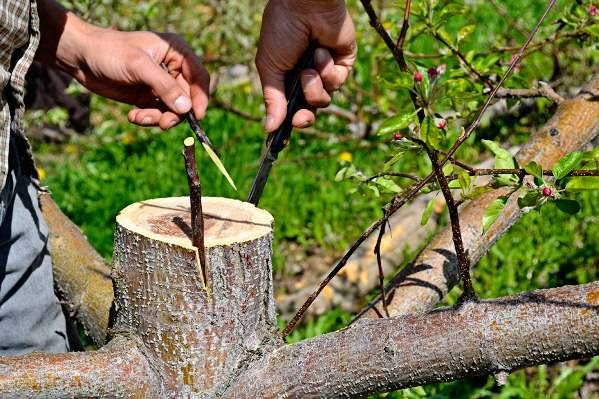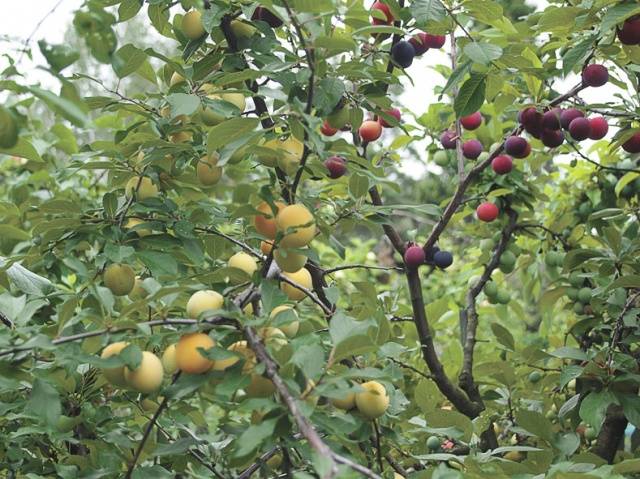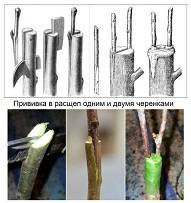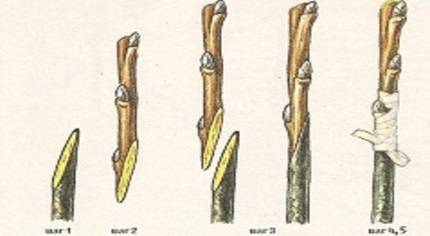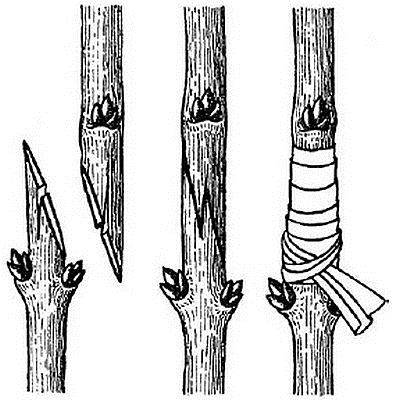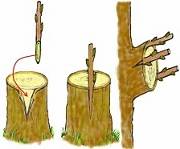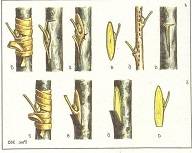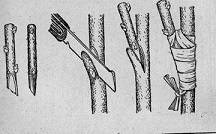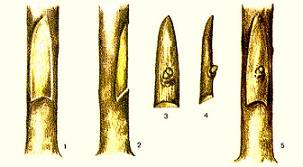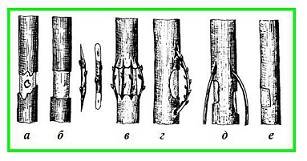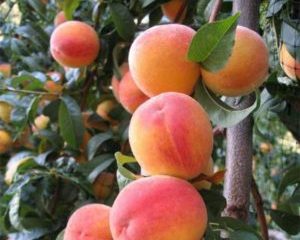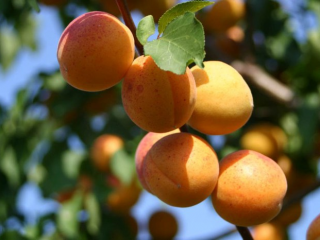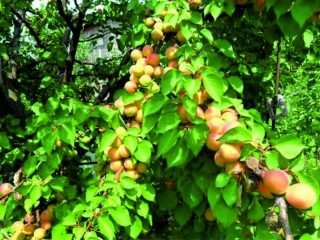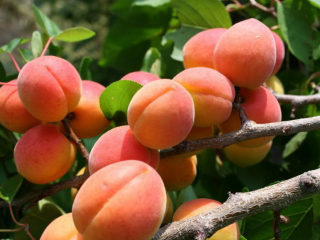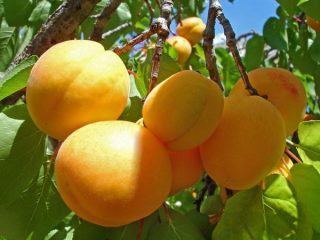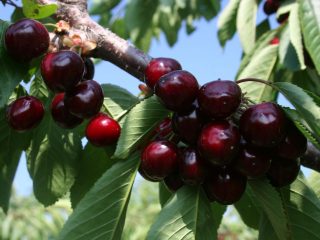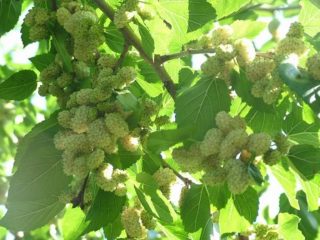Content
- 1 Secrets of grafting fruit trees
- 1.1 Why is this necessary?
- 1.2 Tools
- 1.3 Methods
- 1.3.1 Ablactation
- 1.3.2 Grafting into cleft
- 1.3.3 Simple copulation
- 1.3.4 English copulation (with tongue)
- 1.3.5 Vaccination for bark
- 1.3.6 Parasitic vaccination
- 1.3.7 Grafting in a lateral incision
- 1.3.8 Budding with a shield (with a bud) by the bark
- 1.3.9 Budding with a shield (with a bud) in the butt
- 1.3.10 Grafting with a bark bridge
- 1.4 Deadlines
- 2 Conclusion
Grafting of fruit trees is the process of plant propagation while preserving the varietal qualities of the crop. In gardening, different grafting methods are used, and there are many purposes for using this method. Experts who have mastered several methods can already share them with young beginners; their experience will help solve many problems associated with grafting fruit trees in the garden. There are a huge number of recommendations on how best to graft trees, when and at what time of year this can be done. Not all of them are full of information; we hope that our article will be the most informative and useful for readers.
Secrets of grafting fruit trees
It is necessary to begin studying the “basics” of the process of grafting fruit trees by understanding the questions: why do I and my garden need grafting, what tools and devices should I use, what is the best way to graft plants, and at what time of year grafting will be most effective. Let's take a closer look at each stage of the event together.
Why is this necessary?
Many gardeners, at a certain time and for a number of reasons, come to the decision that they need to master the skills of grafting fruit trees in their garden. We will list some reasons:
- there is a need to propagate good varieties of woody plants, but propagation by other methods (not grafting) does not bring the desired results;
- weak plants grafted onto a sufficiently strong rootstock become the hardiest and healthiest compared to growing on their own roots;
- plants grafted onto a rootstock that has grown for many years in a certain environment and soil adapt faster and more efficiently to living conditions, being in close contact with the “foster parent”;
- as a result of grafting, a strong rootstock with excellent properties: frost resistance, resistance to diseases and pests, the ability to produce significant growth in one season and many others, transfers these qualities to a scion with low viability;
- grafting can solve the problem when the variety of a particular tree does not suit you and you want to replace it with a better species;
- you have a tree growing in your garden with remarkable qualities, but it is already quite old; by collecting the required number of cuttings when pruning it, you can graft them onto a younger rootstock;
- grafting will allow you to fulfill your desire to grow several varieties of the same species on one rootstock;
- by grafting you can change the decorative shape of the tree, increase or decrease the overhang of branches, make the plant trunk high, medium or low;
- In crop farming enterprises: agricultural firms, nurseries, farms, grafting is used to breed new varieties and hybrids, as well as to grow ready-made grafted seedlings for sale to the population.
As you can see, there are many reasons for grafting fruit trees; each gardener will have his own individual needs in this matter.
Tools
Grafting a scion onto a rootstock can be compared to a surgical operation; sterility must be maintained and special instruments must be used. The entire operation during grafting is carried out manually, and the tools become more convenient to use every year. Ordinary kitchen knives are considered unsuitable for grafting trees; special garden tools are needed for grafting work. These are very sharp knives with comfortable handles and strong blades. Not only will they be needed when grafting fruit trees; the complete set for gardeners includes:
- professional grafting device (secateurs);
- U-shaped knife (installed in the grafting mechanism);
- V-shaped knife for grafting very thin branches;
- Ω-shaped knife (produces a locking connection between the scion and the rootstock);
- screwdriver and wrench.
The vaccination kit may include a tube with garden varnish and a disk with a thin grafting tape; if they are not included in the kit, you will have to purchase them separately. Such sets are sold in retail chains or online stores.
Methods
Grafting of fruit trees has been used by gardeners for a very long time; all over the world there are more than 150 species and methods of propagating crops using this method. Trees are grafted using old-fashioned methods and using ultra-modern devices. In one article it is impossible to talk in detail about all the methods of vaccination; we will describe only some of them, the most popular and not too difficult to use.
Ablactation
This grafting of fruit trees occurs randomly in a natural way: with a strong gust of wind, the branches of neighboring trees can catch on each other, a tight hook occurs, and then the branches grow together due to close contact. This grafting method can be used to create impenetrable hedges.
Grafting into cleft
The rootstock in this case can be from 1 to 10 cm thick. A horizontal cut is made on it. Depending on the diameter of the trunk, one longitudinal or two cross-shaped cuts are made on the cut (see photo) with a depth of 2 to 3 cm, 1, 2 or 4 cuttings with 2-4 buds are placed in the cut, the cuttings are cut in the form of a double-sided wedge. The scion should be placed as close as possible to the bark of the rootstock so that fusion is more efficient. This grafting is simple; every amateur gardener can master it.
Simple copulation
The diameter of the scion and rootstock, in this case, is not particularly important; using this method, you can graft fruit trees with the smallest thickness of cuttings, but you need to have an accurate eye to select branches of the same diameter. A sharp oblique cut is made on the grafted cuttings, and they are connected to the rootstock exactly along the cut, then a small splint stick is applied, and the entire structure is tightly wrapped with insulating or grafting tape. The disadvantage of this grafting method is that in the first few years the joint is at risk of breaking, which is why an additional splint is needed, which is replaced or removed as the graft grows together.
English copulation (with tongue)
The tongue, in this grafting method, plays the role of a holder that holds the cuttings in one place, preventing them from moving when wrapped with tape.In the center of the oblique cut, another transverse cut is made on the cuttings and slightly bent in the form of tongues, which are tightly connected in a “groove-to-groove” manner, and are also wrapped with grafting tape. Cuttings grafted with simple or English copulation grow well and quickly. These methods are most popular among gardeners, as they do not require special skills and are easy to master.
Vaccination for bark
Larger cuttings of fruit trees (up to 20 cm in diameter) can be grafted in this way. The method of such grafting is very simple to perform, but it can only be performed during the period of active movement of sap inside the plant, preferably in spring or summer. At this time of year, the tree bark is much more elastic. A horizontal cut is made on the hemp of the rootstock, the bark is cut across in 2-3 places to a depth of 3-5 cm, the edges are slightly moved apart. The end of the scion cutting is cut off in the form of a one-sided wedge and placed under the bark, the grafting site is treated with garden varnish and tightly wrapped with tape. To stabilize the scion, small splint sticks are used.
Parasitic vaccination
This grafting method is used on the branches or trunks of a growing tree. The rootstock is not cut down; a small segment ¼ of the diameter in the form of a corner is cut out on the trunk or branch.In the lower part of the triangle, the bark is cut, its edges are slightly moved apart, a grafted cutting up to 3 cm thick is inserted into this cut. The end of the cutting is prepared in the same way as with the “bark grafting” method. With this grafting method, novice gardeners can master the skills of grafting fruit trees without much damage to the tree. Even if the cutting does not graft, it can be easily removed later, the wound on the tree can be treated, and after 1-2 years the grafting process can be carried out again in the same place.
Grafting in a lateral incision
As shown in the photo on the left, on one side of the rootstock, which does not need to be cut, an oblique cut is made, deepened into the rootstock by 1-1.5 mm from above, and 3-6 mm from below, and a scion with an unequal wedge-shaped end up to 2 mm thick is inserted into it. .5 cm. This vaccination is carried out in spring, autumn or even summer. The scion buds wake up next spring.
Budding with a shield (with a bud) by the bark
Grafting of fruit trees using one bud per scion is called budding. A cut in the bark is made in the shape of the letter T on the rootstock, a small fragment of the scion with one bud (scutellum) is prepared and inserted into this cut, the upper ends of which should be slightly moved apart so that the shield can be conveniently inserted. This grafting method is used if there are not enough cuttings for propagation, so 1-2 cuttings available are divided into several buds. The survival rate of scutes in this case is quite high. Budding is carried out during the active growing season of plants, in spring or late summer.
Budding with a shield (with a bud) in the butt
As is clear from the name of the method, grafting is done by applying a shield with a bud to the rootstock, on which a section of bark (pocket) of the same shape and size as the shield is cut out, the scion is inserted into the pocket and secured to the rootstock. You can get practical experience in grafting fruit trees with buds by watching the video posted at the end of this paragraph.
Grafting with a bark bridge
There is another method of grafting fruit trees, which is effective in restoring the plant if for some reason only part of it was damaged: hares gnawed the lower part of the trunk, and as a result of external mechanical influence, part of the branches was damaged. Before grafting, it is necessary to protect the tree from further adverse consequences - leakage of cadmium and drying out of the damaged area of the bark and wood. If the cadmium could not be saved, it is necessary to save the tree by grafting with a “bridge”. The entire damaged part of the tree is cleaned, cuts are made above and below this area (see bark grafting), and several long cuttings are prepared (see copulation). They are inserted from below and from above. The cuttings must be long enough to look like an arc above the damage site. The number of cuttings depends on the thickness of the trunk; the thicker it is, the more cuttings there should be (from 2 to 7 pieces).
Deadlines
Some types of grafting of fruit trees can be carried out in the spring, some - in spring, summer and autumn, others - even in winter.Most of them take root faster and more efficiently during the movement of juices, but vaccinations made in winter also have a fairly high percentage of effectiveness, although slightly lower than vaccinations carried out during the warm period. The gardener himself must choose what time of year suits him.
A good adviser in determining the timing of vaccinations can be the gardener's Lunar Calendar, which indicates the most unfavorable time for vaccinations. Forbidden days are the Full Moon and the New Moon, when it is impossible to disturb any plants; there is a change in the activity of the movement of juices - from the roots to the upper crowns or, conversely, from the top to the root system.
Conclusion
It is impossible to cover such extensive material in one article, but we hope that young gardeners will find enough information here to satisfy their interest in grafting fruit trees. Watch also the video, where experienced gardeners talk about their experience of grafting and show in practice how to do it. Learn, adopt their experience, we wish you good luck.
